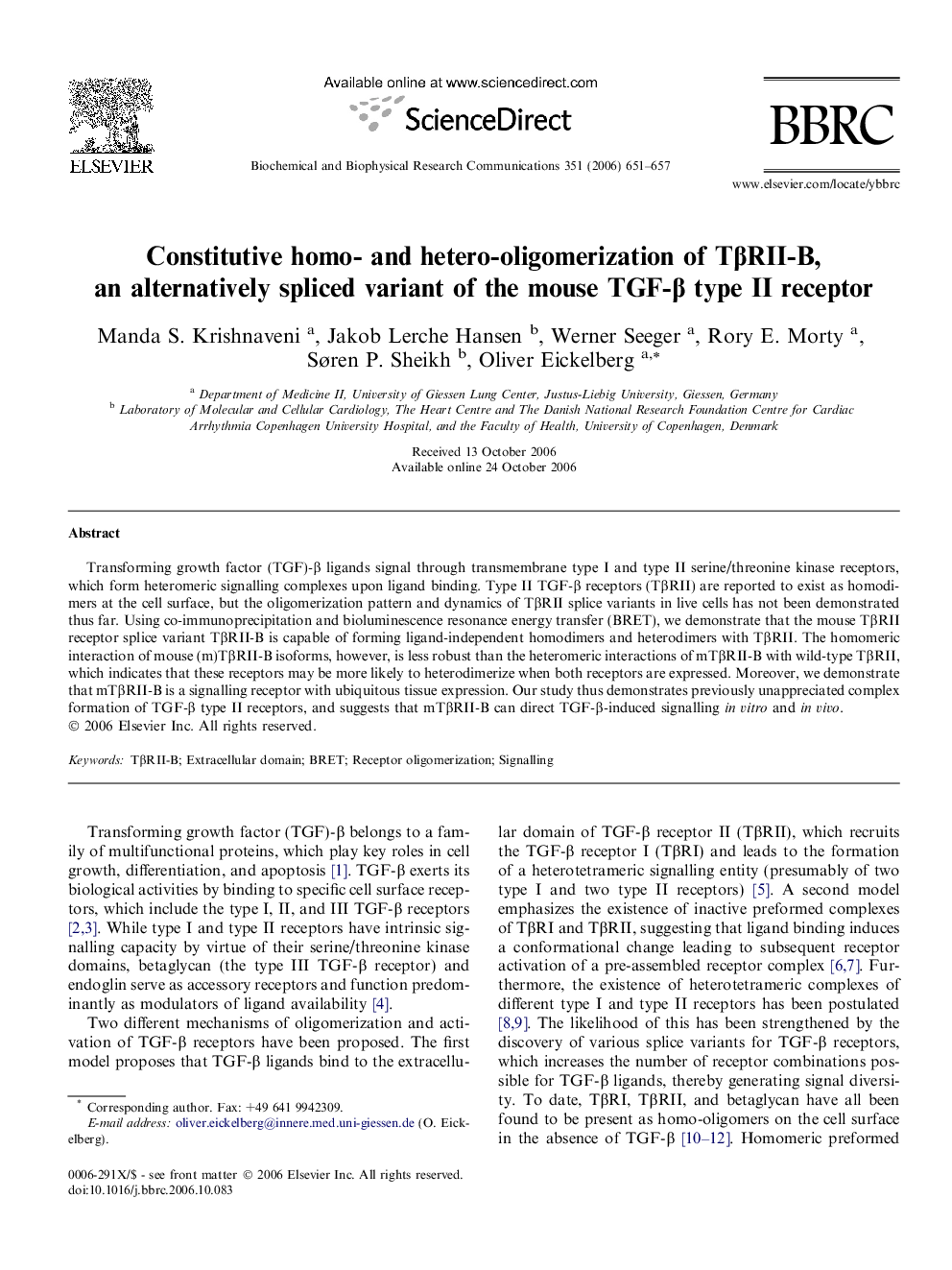| Article ID | Journal | Published Year | Pages | File Type |
|---|---|---|---|---|
| 1938196 | Biochemical and Biophysical Research Communications | 2006 | 7 Pages |
Abstract
Transforming growth factor (TGF)-β ligands signal through transmembrane type I and type II serine/threonine kinase receptors, which form heteromeric signalling complexes upon ligand binding. Type II TGF-β receptors (TβRII) are reported to exist as homodimers at the cell surface, but the oligomerization pattern and dynamics of TβRII splice variants in live cells has not been demonstrated thus far. Using co-immunoprecipitation and bioluminescence resonance energy transfer (BRET), we demonstrate that the mouse TβRII receptor splice variant TβRII-B is capable of forming ligand-independent homodimers and heterodimers with TβRII. The homomeric interaction of mouse (m)TβRII-B isoforms, however, is less robust than the heteromeric interactions of mTβRII-B with wild-type TβRII, which indicates that these receptors may be more likely to heterodimerize when both receptors are expressed. Moreover, we demonstrate that mTβRII-B is a signalling receptor with ubiquitous tissue expression. Our study thus demonstrates previously unappreciated complex formation of TGF-β type II receptors, and suggests that mTβRII-B can direct TGF-β-induced signalling in vitro and in vivo.
Related Topics
Life Sciences
Biochemistry, Genetics and Molecular Biology
Biochemistry
Authors
Manda S. Krishnaveni, Jakob Lerche Hansen, Werner Seeger, Rory E. Morty, Søren P. Sheikh, Oliver Eickelberg,
